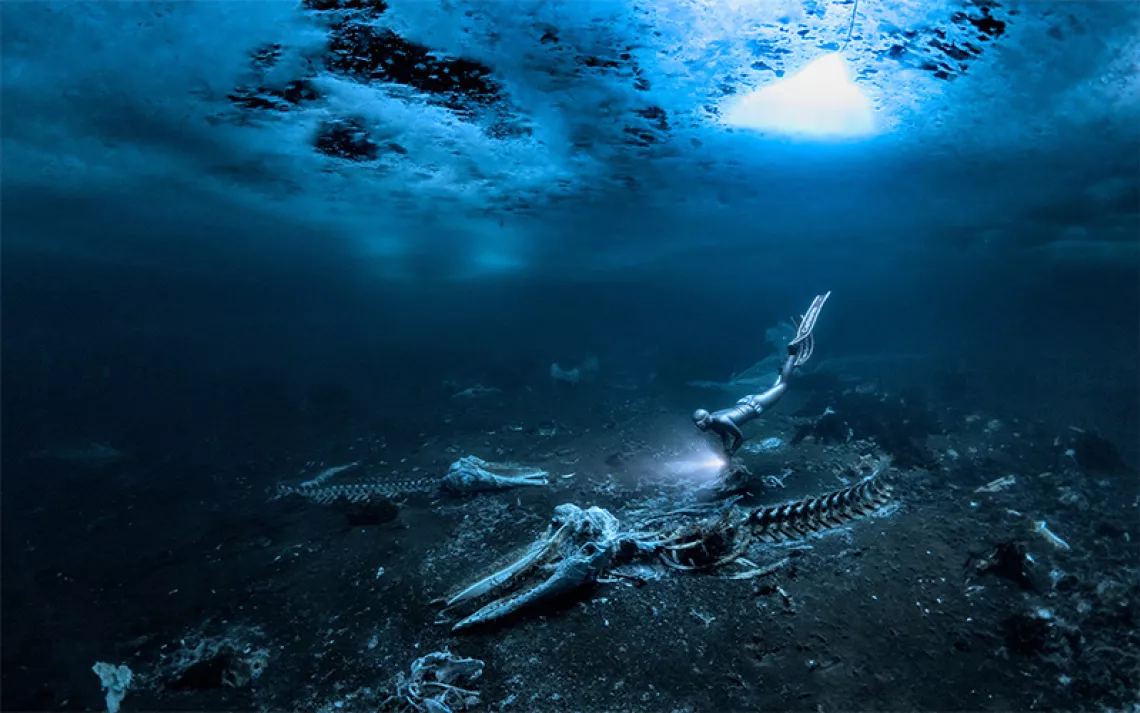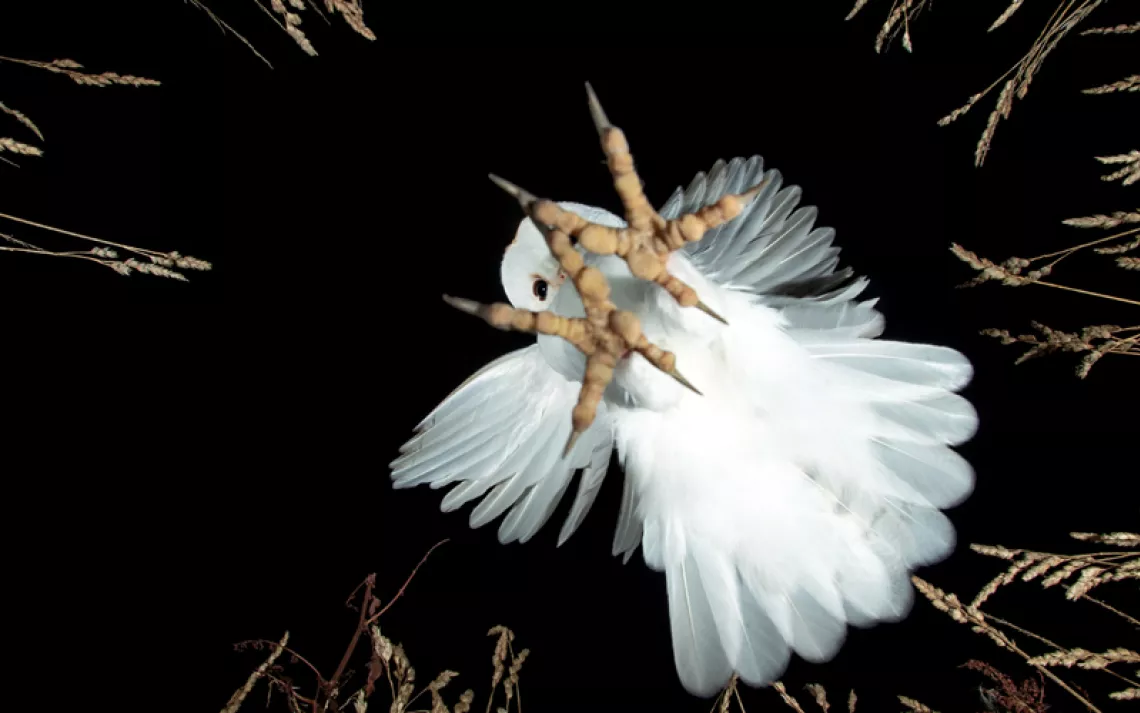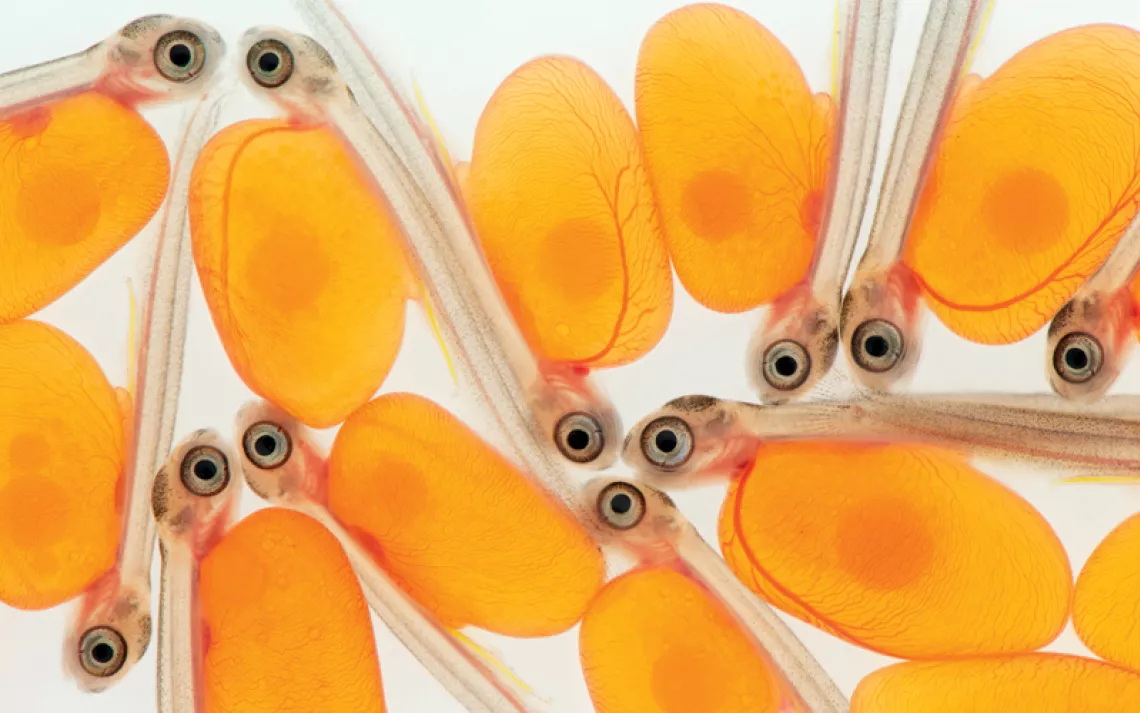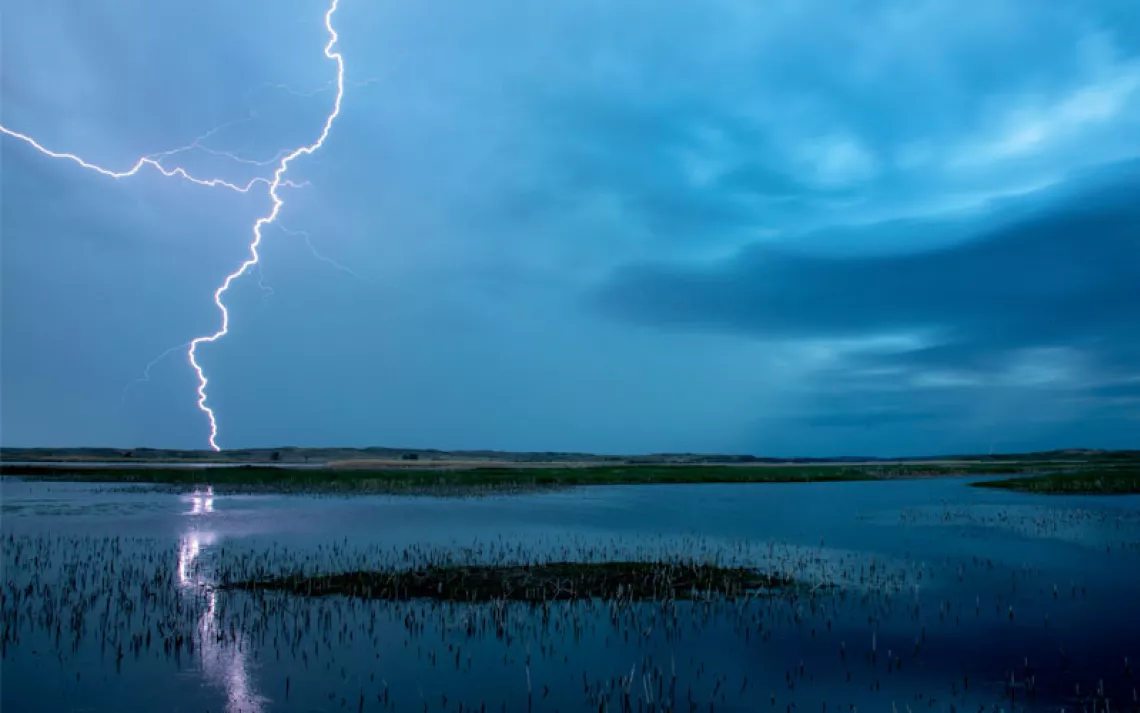How to See Through the Lens of Empathy, Compassion, and Conscience
“Seeing It All” lifts up the work of 11 cutting-edge female photographers
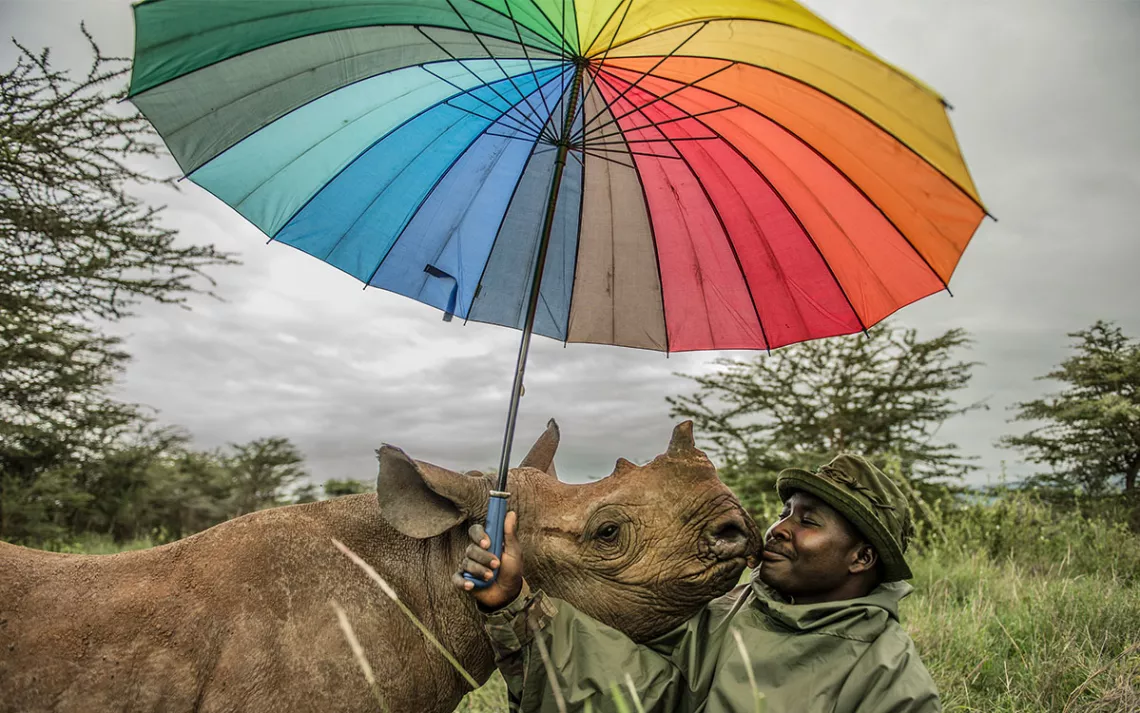
John Kamara, keeper at the Lewa Wildlife Conservancy in Kenya, with Kalifi, one of three rhino calves he raised. | Photo by Ami Vitale from Seeing It All: Women Photographers Expose Our Planet
It is a scene with so much color and delight in the foreground that you would be hard-pressed to see the darkness lurking in the background. In it, John Kamara, a keeper at the Lewa Wildlife Conservancy in Kenya, holds a rainbow umbrella over one of his charges—an 18-month-old black rhino named Kalifi—who appears to be leaning in for a kiss. The young calf is one of three that Kamara raised by hand. He spends 12 hours a day with these animals in an effort to save their species from extinction, one at a time. In 1987, there were only 400 remaining in the world. Today, that number has nearly doubled thanks to individuals like Kamara.
The picture—taken by war photographer turned conservationist Ami Vitale—invites us to see more than just a story about endangered species with its potential for tragedy. We see a relationship—with its richness, presence, and play—in which the common bonds and connections between all living things come alive, salient, and worthy of our attention.
“Through Vitale’s eyes you see the compassion that the caretakers have for these animals,” Rhonda Rubinstein, editor of Seeing It All: Women Photographers Expose Our Planet (Goff Books, 2023), told Sierra. Vitale is well known for photographing the final years of the world’s last remaining northern white rhinoceros, Sudan, before he died. “That’s why we put together this book. It came from a desire to showcase these influential photographers and show the world through their eyes.”
Seeing It All is a compilation of 11 visual storytellers whose reporting stands at the vanguard of wildlife and conservation journalism. This book is a resounding response to a profession that has long celebrated male photographers while marginalizing others doing the same cutting-edge work. In the last decade, nonprofit collectives like Women Photograph have formed to counter that history of bias and offer partnership spaces that lift up female-identified and nonbinary photographers. Seeing It All carries that intention forward, highlighting photographers who use the classic tropes of story to communicate a particular way of seeing the world. Through that lens, we encounter more than just what conventional wildlife photography often would have us see: regal animals, lush landscapes, and faraway places that telegraph adventure. Instead, we witness the power of connection, cooperation, and partnership, and their universality among all species—as well as the perils that come from living in disharmony with those values.
There has never been a lack of cutting-edge female and nonbinary visual storytellers. But their historical erasure in the field of photography points to the devaluation of the feminine so common to many domains of society. Seeing It All affirms what there is to gain when that perspective is restored and rises, free of the gendered cultural norms that too often supplant and marginalize it: a way of seeing the world holistically, through the lens of empathy, compassion, and conscience.
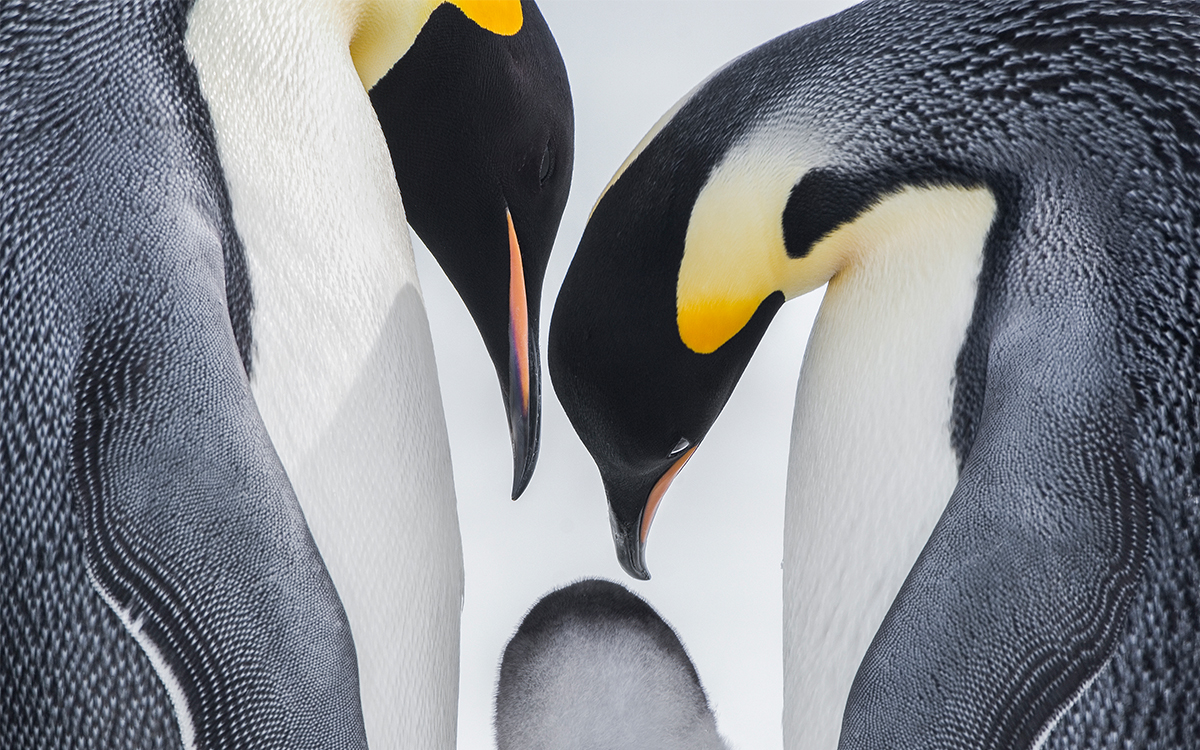
A pair of emperor penguins on Snow Hill Island, Antarctica, tend to their chick. | Photo by Daisy Gilardini from Seeing It All: Women Photographers Expose Our Planet
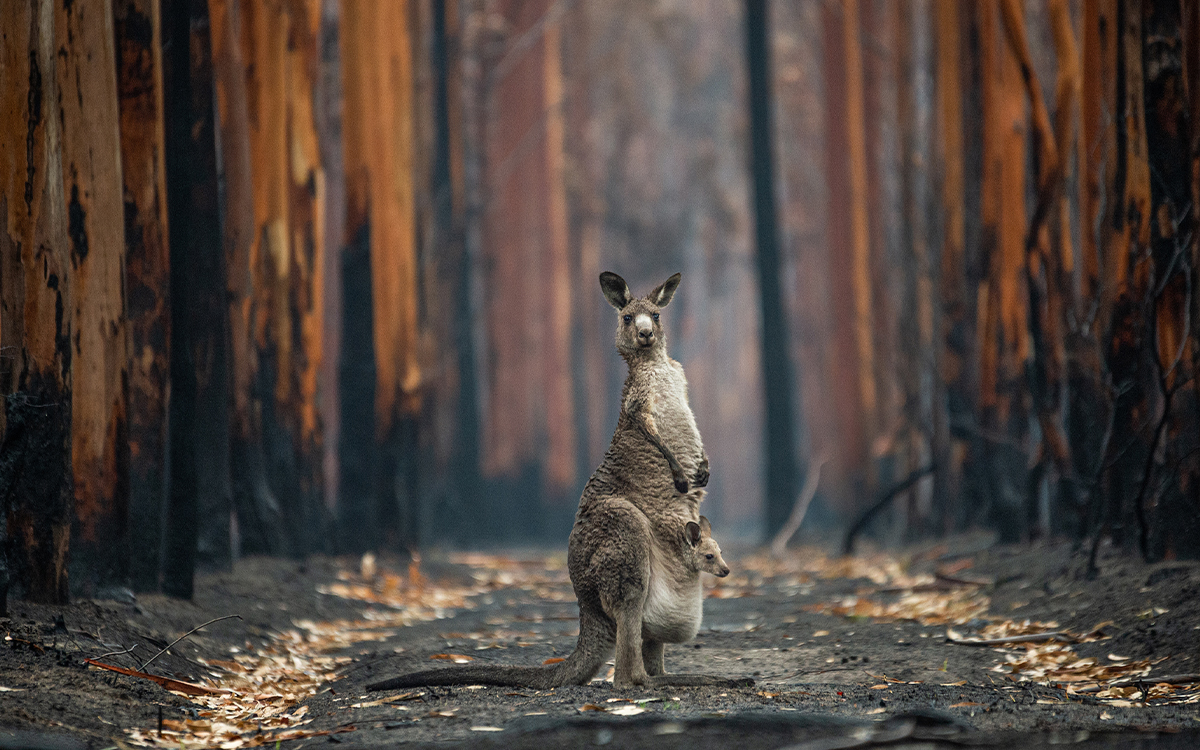
Kangaroos that survived the 2020 wildfires in Australia. | Photo by Jo-Anne McArthur from Seeing It All: Women Photographers Expose Our Planet
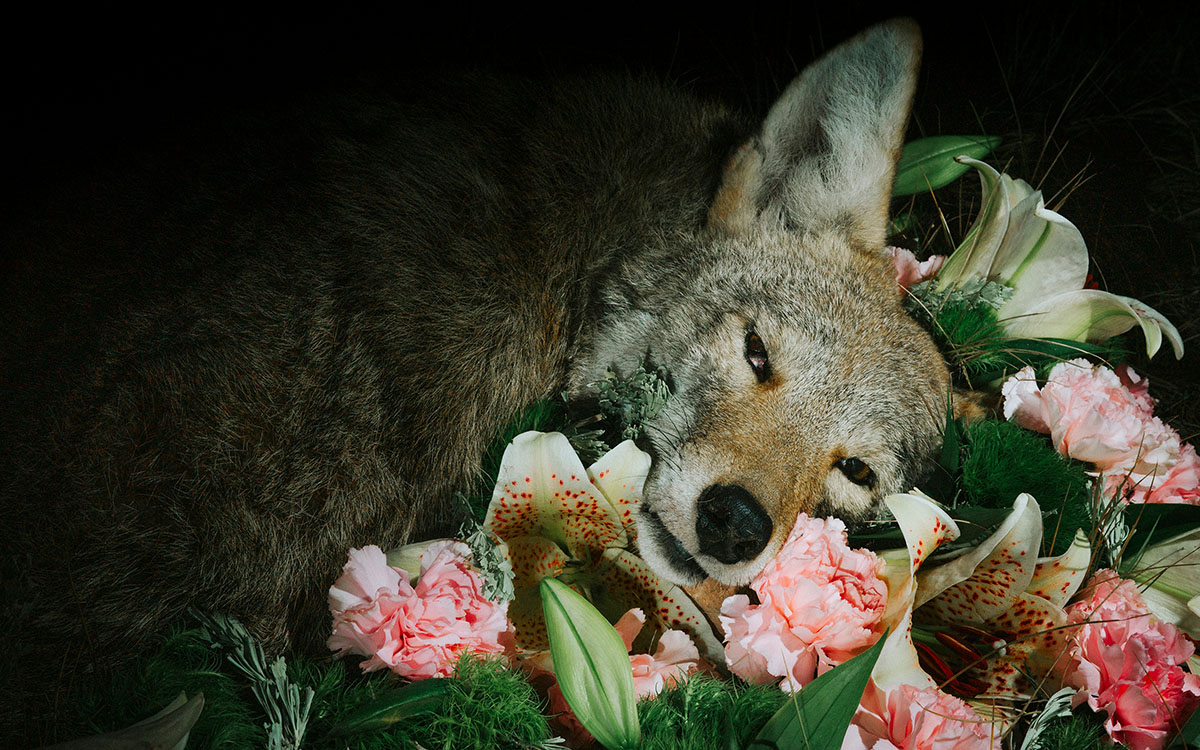
Morgan Heim found this coyote killed on the highway leading into Grand Teton National Park. She later returned after dark with a floral arrangement to offer a "from-the-heart apology" to another needless animal victim. | Photo by Morgan Heim from Seeing It All: Women Photographers Expose Our Planet
“People have asked me, ‘Do women see the world differently? Is there a difference in how these women are photographing the world?” Rubinstein, creative director for the California Academy of Sciences, says. “Eleven is a small sample size, but now that the book is done, I do see common threads.”
The book emerged from the Academy of Sciences program Big Picture, which visual artist Suzi Eszterhas cofounded 10 years ago. The program features an annual nature and wildlife photography competition with six topic categories including art of nature, human nature, aquatic life, and landscapes. A panel of distinguished photographers and photo editors help with judging, and the winning images are featured in an exhibit. Each year, there is a rotating photo story theme; "unusual perspectives" is the theme for 2024. The program has given out $120,000 in prizes over 10 years and reviewed nearly 80,000 images.
In reviewing the winning images, the organizers of the Big Picture noted a disproportional rate of male photographers to female photographers shown in the exhibit. “We realized we wanted to elevate their work more, and that’s where the idea of doing a book lifting up female photographers in the conservation world came in,” Rubinstein says.
Tui De Roy, one of the 11 featured photographers, is just a single example of how women have been trailblazing in the profession of conservation photography for generations. She has photographed fragile ecosystems for over 50 years, notably in the Galápagos.
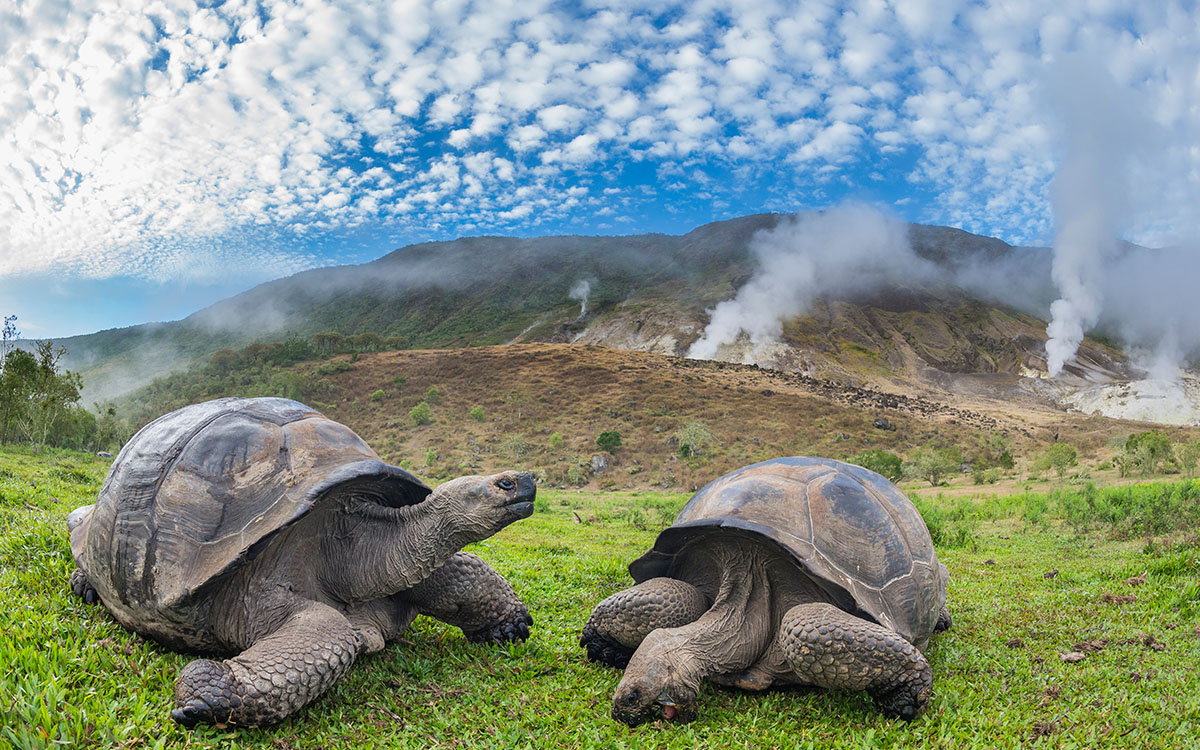
Two male giant tortoises crop the grass on the caldera floor of Alcedo Volcano. | Photo by Tui De Roy from Seeing It All: Women Photographers Expose Our Planet
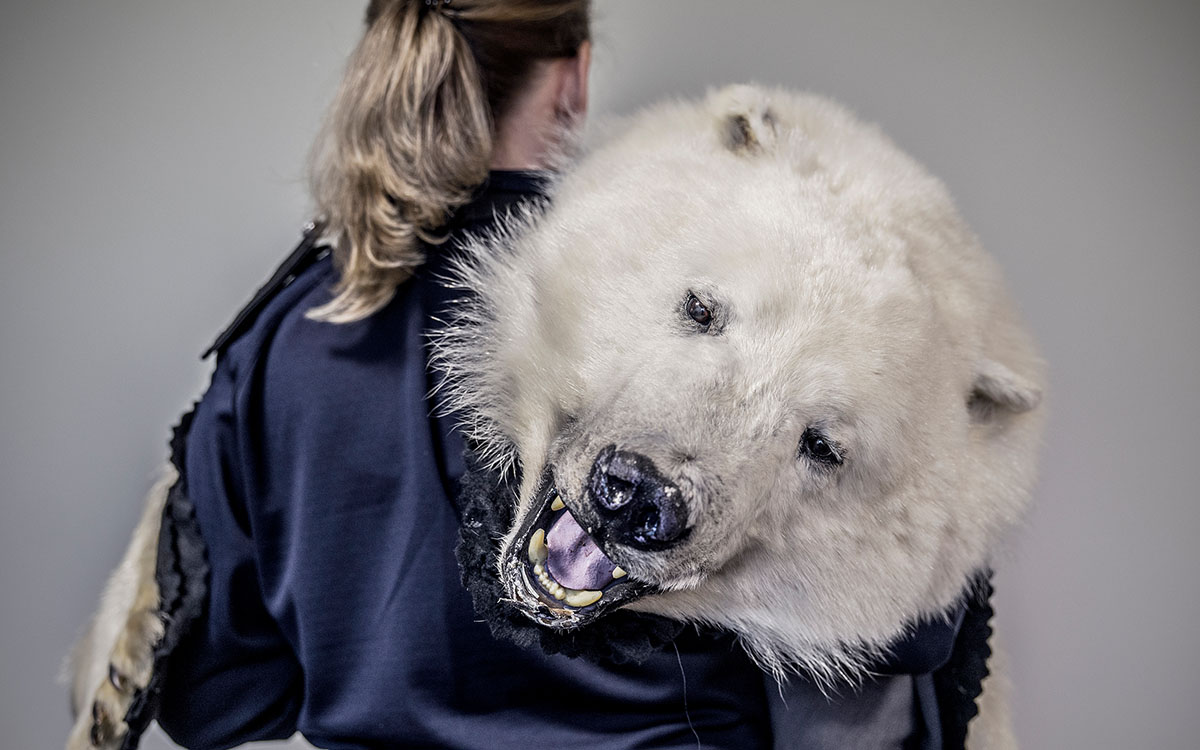
A Border Force officer with a confiscated polar bear hide at Heathrow Airport. | Photo by Britta Jaschinski from Seeing It All: Women Photographers Expose Our Planet
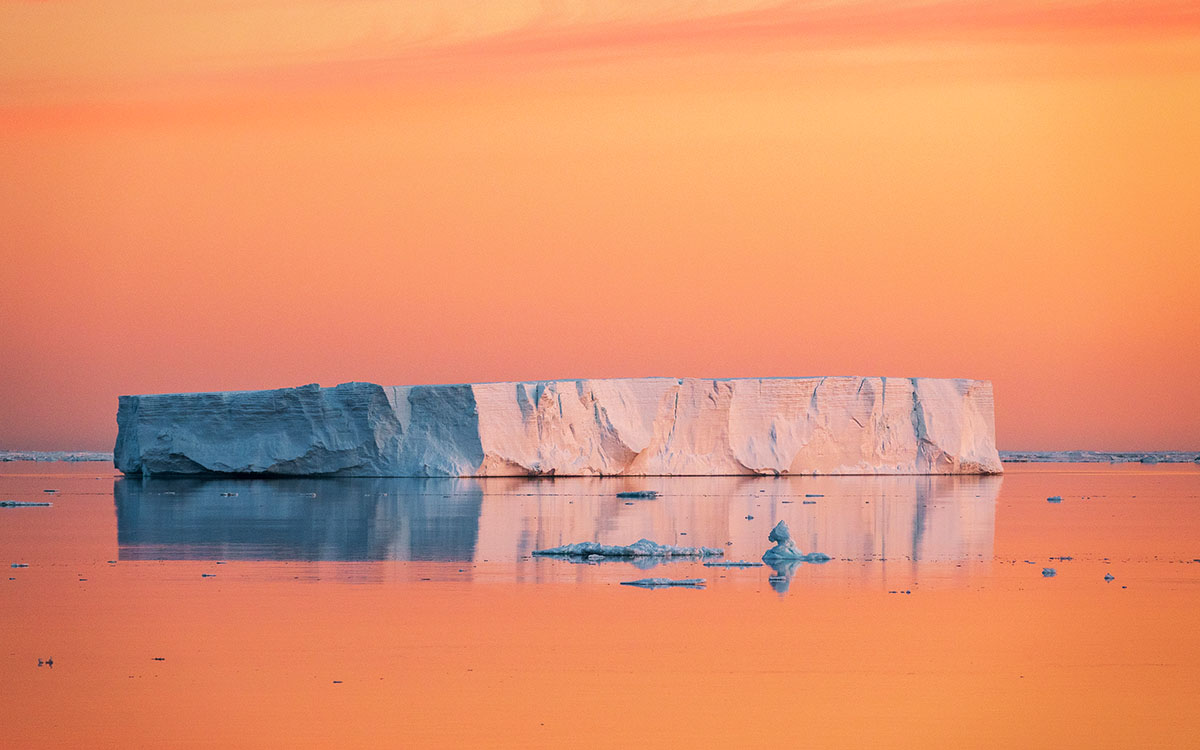
An iceberg at dawn on the summer solstice in Antarctica's Weddell Sea. | Photo by Camille Seaman from Seeing It All: Women Photographers Expose Our Planet
The work of a newer generation of photographers exposes the destructive intersection between human consumerism and the natural world. For example, Britta Jaschinski’s images of animal trophies—from ocelot, cheetah, and leopard fur coats hanging casually on a shopping rack to a border officer walking away with a confiscated polar bear hide—are haunting. “Photography, filmmaking, and journalism are among the most important professions on the planet,” she is quoted in the book. “Without these, the world’s conscience would wither.”
For Camille Seaman, whose work was featured in Sierra in 2018, presence and connection underly our bonds to not just our ancestors but the ecosystems around us, such as the ice of the Arctic, which is now vanishing in a warming world. And Esther Horvath introduces us to the groundbreaking women in the field of Arctic science. In one image, the moody blues of a nocturnal scene are interrupted by the bright white of an inflated weather balloon and the lone engineer, Sandra Graßl, holding it aloft to take in measurements. She stands before us, centered, holding an instrument in the other hand—a look of dedication lit up on her face.
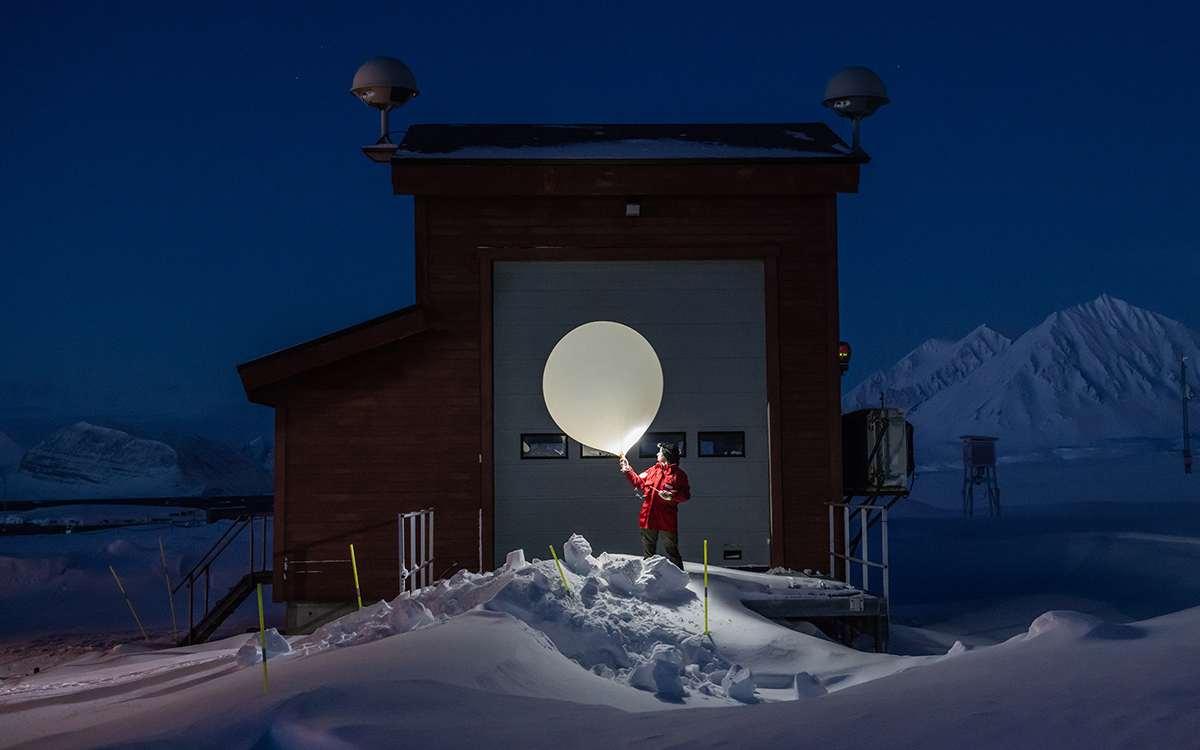
Sandra Graßl releases a weather balloon at an atmospheric observatory on Svalbard. | Photo by Esther Horvath from Seeing It All: Women Photographers Expose Our Planet
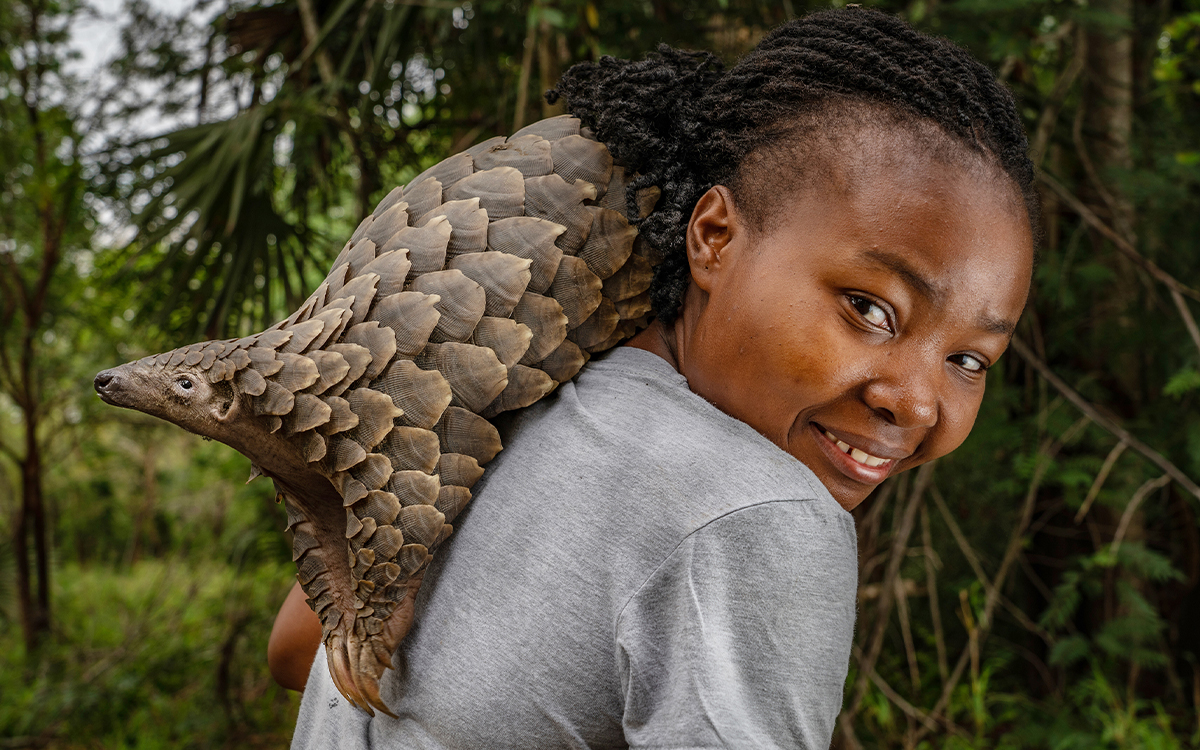
Mozambican veterinarian Mercia Angela with a female pangolin reclaimed from poachers. | Photo by Jennifer Guyton from Seeing It All: Women Photographers Expose Our Planet
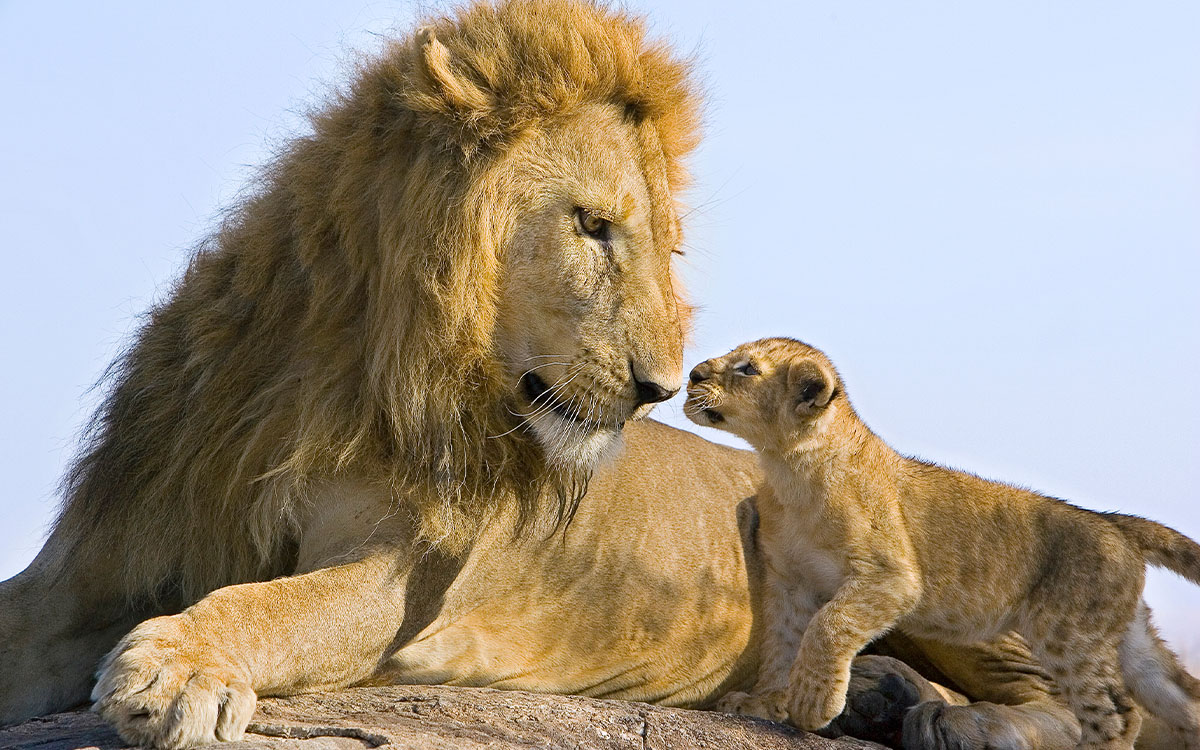
A lion cub meets its father for the first time in Kenya's Maasai Mara National Reserve. | Photo by Suzi Eszterhas from Seeing It All: Women Photographers Expose Our Planet
A clear ethos runs throughout Seeing It All, and Rebecca Solnit captures it best in her introduction, “Seeing is the beginning of caring.” “Too many people with too much power didn’t think ecologically—that is, in terms of interconnected systems,” she writes. “They didn’t recognize the delicate orchestration of innumerable parts that makes up the symphony of the biosphere. Learning to see that is crucial to learning to care for it. These photographs are instructions in that vision.”
 The Magazine of The Sierra Club
The Magazine of The Sierra Club
